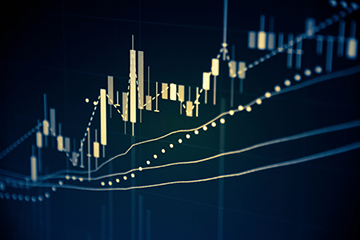Geopolitical Risks Rising
SEPTEMBER 25, 2019
AUTHOR: DAN PEMBLETON
By the time you read this, you will already know that Saudi Arabia had strategic oil infrastructure attacked, shutting down 5mm barrels a day of production at the time of the attack. This represents roughly half of Saudi production and 5% of global production. Oil prices quickly moved 10% higher and gold prices 5%. The Saudis claimed to have restored 2.5mm barrels of production shortly after the attack and the rest of it by the end of September. This may be true, or could also be a bit of misinformation to keep their attackers or oil production rivals off the trail of how effective the attacks were or were not, or it could also be posturing to support their IPO of Aramco, showing how resilient it is. Immediately after the attacks, Houthi rebels in Yemen claimed responsibility. However, Saudi and US intelligence are claiming Iran was behind the attacks, which seems more plausible given the equipment and logistics needed to conduct such an attack would require significant resources, associated with a larger state’s capabilities.
It would seem to be a difficult position for Saudi Arabia to have been attacked and have 50% (now restored they claim) of its most significant state revenue source eliminated by an outside force, and to not respond to it except through diplomatic channels. While no one wants a shooting war there may be other more covert ways for the Saudis to respond. Perhaps they will use force, perhaps not, but the threat of response seems high. The Rebels, and probably Iran, have put their enemies, including the United States, in a very difficult position. Remember too that it was the withdrawal by the US from the nuclear treaty with Iran that has prompted a hardline response from Iran, the opposite of what the US expected or wanted. They wanted Iran to fold and give the US a better nuclear deal. Now the US must make further choices that may either make them seem to be appeasing Iranian actions or escalating the situation further and risking more serious conflict. Things could get out of control, or almost certainly get worse, before they get better. It seems unlikely this point in time is the worst case for this scenario.
What is an investor to do to protect themselves?
I started by discussing the Saudi/Iran/Yemen conflict. However, the theme of this update is that there are many geopolitical and economic dangers in the world, not just the Saudi/Iran or other Middle East frictions, and how investors can protect their investments from such risks. Gold is moving back into its traditional place as a hedge against these dangers. Other traditional hedges, or perhaps more correctly, shelters against geopolitical and economic shocks and risks have been US Treasury bonds, US dollars, Japanese Yen and German Bunds (German Bonds). For years, gold has been somewhat ignored as a hedge, with investors recently preferring those alternatives in times of danger. However, at this point, all bond yields are extremely low, and the US Dollar and Yen are at the higher ends of their traditional valuation ranges. These are very expensive hedges/shelters now. I believe this is pushing people back to gold and precious metals as a hedge. Ideally you want a hedge to be effective, meaning it increases in value when other asset prices are falling, and you need it to cushion the portfolio value. You also want it to be inexpensive, so that you don’t have to spend much of your capital on the hedge to get the protection you desire.
Everything but gold in the traditional hedging choices is already very expensive, making their usefulness as a hedge less effective, and using them will perhaps introduce new risks to an investor’s holdings because of the high cost and potentially low effectiveness. Many investors should be looking for a hedge that will diversify them against various risks, but also a hedge that is reasonably priced. Gold is a strong candidate.
Here is just a quick list of some other geopolitical hotspots that are simmering currently. You never know which ones may flare up or when. In no order, this list is just to remind us all that stability is always at risk. In fact, some rather obvious ones may be missing, because one of the risks in this world is that we just get used to certain frictions and no longer give them the concern that perhaps we should, and I have simply forgotten about them. This just emphasizes even more why some protection in any portfolio is prudent.
Geopolitical hotspots on the top of my mind:
- Crimea/Ukraine/Russia
- North Korea
- UK Brexit
- US - China Trade dispute
- Venezuela
- Hong Kong protests
- Palestinian/Israel conflict
- Italian populist movement
Any of these could erupt at any time, and for unanticipated reasons. This is the unpredictable nature of geopolitical risks; they are practically impossible to anticipate, and it is even harder to predict what follow-on effects on the world may be. A big part of the reason for unpredictable effects from geopolitical tensions is the highly synchronous nature of global markets today. Events in one part of the world can quickly impact another. Sometimes the transmission mechanism may not even be direct. It could just be a triggered change in sentiment from a seemingly otherwise unrelated event. A debt problem in Portugal, property market collapse in Australia, price shock in oil or a natural disaster in a highly populated area can quickly spread to almost any market in the world as risks are transferred. This can cause people and institutions to all react similarly to any one event. I’m not predicting any specific risk will be a problem. I am not crystal ball gazing. I just want to illustrate that problems can come from very different directions and we truly cannot anticipate any specific event or a reaction to any event. It is all random, so we need to be continuously prepared.
I will use a fictitious scenario to demonstrate how risk can transmit around the world. Perhaps a Brazilian political problem causes a stock market collapse there, spilling over to Latin American assets. That can cause a general pull-back by investors on emerging markets and maybe particularly sovereign debt of emerging markets, which in-turn could impact bonds of the more indebted nations of the EU such as Spain, Greece, Ireland and the most difficult to contain of all of them because of its size, Italy. This is how an issue in one part of the world, a Brazilian political problem, can be transmitted to another, seemingly unrelated, part of the world with more serious consequences, like sparking an Italian debt crisis.
Geopolitical issues can also easily spill over to into the real economy very directly, such as the UK Brexit vote as an example, where the threat of exiting the EU has had significant impacts on UK GDP even before any actual exit occurs. Remember that in 2016, the stay vote in the UK was widely expected to be the winner.
While nothing in this note is provided as an explicit prediction of what will unfold, I think it does illustrate the point that everyone should perhaps think a little defensively in their economic decisions. This defensive posture should also include considering what your exposure to the gold market and gold stocks is in your portfolio. The relative cost of hedging with gold and gold stocks is currently very low, and their value in a potentially more dangerous and chaotic world would be very high. Pavilion funds provide exposure to gold explorers, which is on the more volatile end of the gold investment spectrum, but they also provide an immediate tax reduction which reduces their cost and is also critical to reducing your overall tax burden, and increasing your economic resources, to maintain or even increase your wealth through volatile markets.
There are many small things you can do now, and should address regularly in any market, to prepare yourself for the unexpected. Adding gold to your investment portfolio and reducing your tax burden are two good ones.


